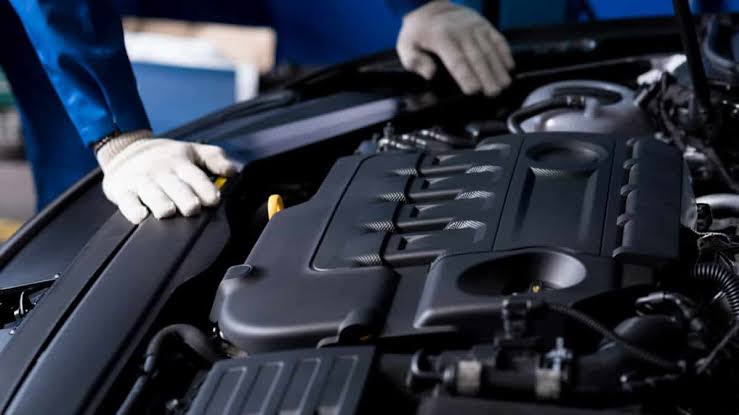Here's a shocking truth: 73% of automotive journalists form their initial vehicle impressions before they even press the accelerator pedal.
They're not examining paint quality or interior stitching. They're listening. The moment that engine settles into its idle rhythm, seasoned reviewers are already cataloging refinement levels, engineering quality, and potential red flags that could make or break a recommendation.
Your ears are more diagnostic than you realize. While most drivers think "my engine sounds fine" without truly listening, automotive professionals know that an engine's idle tells a story worth thousands of words. That gentle purr or concerning rattle reveals manufacturing precision, maintenance history, and future reliability in ways that no visual inspection ever could.
Professional reviewers use this auditory evaluation because engine idle represents the most honest moment in any vehicle's operation. No marketing tricks, no performance tuning wizardry. When that engine settles into its resting state, you're hearing pure engineering truth. The refinement gap between a $20,000 economy car and a $100,000 luxury sedan becomes immediately apparent through sound alone.
The Science Behind Perfect Idle
Modern engines should idle between 600-900 RPM in most passenger vehicles, according to industry standards. But RPM numbers tell only part of the story. True engine refinement comes from consistency, smoothness, and the absence of unwanted frequencies that indicate internal problems.
Premium manufacturers invest millions in what engineers call "idle refinement." This involves precise engine mount calibration, advanced fuel injection timing, and sophisticated engine management systems that minimize vibration transmission to the cabin. When automotive journalists evaluate vehicles, they're essentially conducting a real time engineering assessment through their ears.
The difference between excellent and poor idle quality often comes down to manufacturing tolerances measured in thousandths of an inch. Expensive engines maintain tighter internal clearances, resulting in smoother operation and that coveted "sewing machine" idle that luxury car buyers expect.
Sounds of Engine Health
- The smooth operator: A healthy engine produces a consistent, rhythmic sound with minimal variation. You'll hear individual cylinder firing events blending into a steady hum. No irregular beats, no sudden changes in pitch. This is the gold standard that reviewers immediately recognize as quality engineering.
- The rough idle warning: When engines develop problems, the idle becomes erratic. Listen for fluctuating RPMs that cause the engine note to rise and fall unpredictably. This often indicates fuel system issues, worn engine mounts, or ignition problems that will only worsen over time.
- Vacuum leak hissing: A high pitched hissing sound during idle typically indicates vacuum leaks in the intake system. This creates unmetered air entering the engine, causing rough idle and reduced fuel efficiency. Professional diagnosticians can often locate these leaks by ear alone, listening for the characteristic sucking sound that intensifies near the problem area.
Sounds That Spell Trouble
- Engine knock: Perhaps the most serious idle-related sound is engine knock or "pinging." This metallic rattling indicates premature fuel combustion that can destroy pistons and connecting rods. Many drivers describe it as "marbles rattling in a can," and it's often most noticeable during idle when other engine noises are minimal. As one experienced mechanic puts it: “People always say 'it gets me where I need to go' when ignoring engine knock, but that engine won't be getting anyone anywhere much longer.”
- Bearing knock: Lower pitched knocking sounds often indicate worn connecting rod bearings. This rhythmic hammering becomes more pronounced as engine RPM increases and represents internal damage that requires immediate attention to prevent catastrophic failure.
- Valvetrain noise: Clicking or tapping sounds from the engine's upper section usually indicate valvetrain problems. Worn camshafts, lifters, or timing chains create distinctive metallic tapping that experienced technicians can identify instantly.
What Reviewers Listen For
Professional automotive evaluators focus on several key acoustic signatures during their initial engine assessment:
- Consistency: Premium engines maintain steady idle without fluctuation. Any wavering in engine speed or sound quality immediately flags potential issues.
- Isolation: Quality engine mounts prevent vibration transfer to the cabin. Reviewers sit in the driver's seat and listen for intrusive engine noise that indicates poor refinement or worn components.
- Throttle response: Quick blips of the accelerator reveal engine responsiveness and fuel system health. Hesitation, stumbling, or delayed response suggests maintenance issues or design compromises.
The automotive industry's $7.2 billion investment in engine refinement technologies reflects how seriously manufacturers take idle quality. When reviewers evaluate vehicles, they're essentially conducting quality audits that determine which engines meet modern refinement standards.
Your Diagnostic Toolkit
You don't need professional training to evaluate engine idle quality effectively. Start by listening with the hood closed, then open it to identify specific problem areas. A healthy engine should sound confident and purposeful, never struggling or uncertain.
Pay attention to temperature related changes. Cold engines often idle slightly higher initially, then settle into normal ranges as they warm up. Persistent high idle after warm-up indicates potential problems with the idle air control system or vacuum leaks.
Trust your instincts. If something sounds wrong, it probably needs attention. Many drivers ignore early warning signs by thinking "it still runs," but professional reviewers know that small problems become expensive repairs when left untreated.
Remember that engine idle represents your vehicle's baseline health. Everything from fuel quality to maintenance history reveals itself in those quiet moments when the engine settles into its natural rhythm. By developing your listening skills, you'll join the ranks of automotive professionals who can assess vehicle quality before the first mile is driven.
The next time you start your engine, take a moment to truly listen. Your ears might tell you more about your car's condition than any visual inspection ever could.

Comments (0)
Please login to join the discussion
Be the first to comment on this article!
Share your thoughts and start the discussion